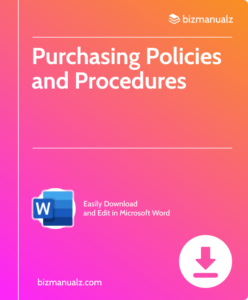How to Reconcile Accounts Payable

Reconciling accounts payable is a must for any business. It confirms that all invoices are paid properly. This helps keep good relations with vendors and shows a true financial report of company liabilities. How to reconcile accounts payable.
Reconcile Accounts Payable
Gathering relevant documents such as invoices, purchase orders, and payment receipts is the beginning of reconciliation and should be the first step in your accounts payable procedure. Checking these carefully reveals any discrepancies which can be fixed quickly.
Timing of payments is an important detail. Invoices may be late or lost, resulting in delayed payments. To stop this, open communication with vendors should be maintained.
Technology can make reconciliation simpler. Automated accounts payable systems track invoices matched to purchase orders and receipts in real-time. This saves time and reduces errors.
An internal control system should be set up. Assigning roles and duties in the accounts payable department keeps accountability. Audits and reviews detect potential problems and stop fraud.
What is Accounts Payable?
Accounts Payable is a must for financial management. It’s when a company owes money to suppliers or vendors for goods and services bought on credit. In short, it’s all unpaid invoices and bills that need paying. Managing Accounts Payable is essential for keeping up good vendor relationships and having a smooth cash flow.
To reconcile Accounts Payable, certain steps have to be taken. Firstly, all invoices and bills from suppliers must be examined and compared with the related purchase orders or contracts. This helps spot any mistakes that could have happened during the buying process. Once invoices are checked, they can be saved in the accounting system.
Next, payments must be scheduled depending on payment terms made with suppliers. It’s important to stick to these terms to keep good ties with vendors and avoid late payment fines. The payment schedule should also consider available cash flow and prioritize payments accordingly.
During the Accounts Payable reconciliation process, good contact with suppliers is fundamental. Any discrepancies or disputes regarding invoices should be resolved quickly by talking openly. This helps maintain trust and transparency between the parties.
Lastly, internal audits and review of financial statements should be done often to make sure accounts payable records are accurate and complete. This helps detect potential fraud or errors.
An article by FMA states that managing Accounts Payable well not only increases operational efficiency, but also improves a company’s overall financial performance.
Importance of Reconciliation
Reconciliation is essential for accurate and up-to-date financial records. It ensures accounts payable match vendor invoices and payments. This helps identify discrepancies, prevent errors and avoid legal issues.
Not only that, but it also reveals fraudulent or erroneous activities. It guards against potential fraud by detecting unauthorized transactions. Comparing vendor statements to internal records can spot inconsistencies and resolve them.
Plus, it increases accounts payable efficiency. Regular reconciling reduces missing payment deadlines or overlooked invoices. This maintains good vendor relationships with timely and accurate payments.
To reconcile accounts payable, review vendor statements against internal records regularly. Spot discrepancies quickly and take necessary actions. Implementing accounting software will streamline the process.
Preparing for Reconciliation Process
Prepping for reconciliation is essential for smooth accounts payable. It verifies accuracy and spots any discrepancies or errors. Here’s a step-by-step guide on how to do it right:
- Gather Needed Docs: Collect invoices, receipts, and financial records related to accounts payable. This includes purchase orders, payment vouchers, and bank statements.
- Verify Data: Double-check details on each doc with entries in your accounting system. Ensure all info is accurate and up-to-date.
- Organize + Categorize: Sort transactions based on categories such as suppliers, expenses, or time periods. This helps spot discrepancies during reconciliation.
- Reconcile Outstanding Invoices: Identify any yet to be paid or resolved. Follow up with suppliers, if needed, and update records.
- Regular Audits: Conduct periodic checks to ensure compliance with internal controls, identify fraud or errors, and maintain integrity of accounts payable process.
Communicating with vendors and stakeholders is also key to resolving any issues that arise during this prep phase.
Pro Tip: Use accounting software to speed up the reconciliation process. It automates data entry and provides real-time financial updates.
Matching Invoices and Payments 
Take a look at this table:
| Invoice Number | Date | Amount (USD) | Payment Reference | Date | Amount (USD) |
|---|---|---|---|---|---|
| INV-001 | 08/10/2022 | $5000 | PAY-001 | 08/12/2022 | $5000 |
| INV-002 | 08/11/2022 | $3000 | PAY-002 | 08/14/2022 | $3000 |
| INV-003 | 08/15/2022 | $2000 |
To check invoices and payments correctly, one must analyze vital details such as invoice number, date, and amount. By pairing these facts with payment references and dates, faults or missing payments can be noticed quickly.
Plus, running things in an orderly way is necessary to guarantee exact matching. This means filing invoices in date order, noting payment references, and often examining accounts payable statements.
In the same way, I can tell you a fascinating true story. A business in the manufacturing sector had a major misfortune due to a misalignment between invoices and payments. It was seen that some invoices had been wrongly assigned to different customers, leading to disorder and late payments. The event showed the importance of using reliable reconciliation procedures to avoid such expensive mistakes.
Remember, perfect matching of invoices and payments is essential for keeping accurate financial documents. By practicing disciplined practices and having efficient systems for reconciliation, companies can avoid possible mistakes and build reliance in their accounts payable processes.
Resolving Discrepancies
Resolving discrepancies is a must for reconciling accounts payable. Analyzing financial records and finding any inconsistencies or errors is essential. Here are 4 points to keep in mind:
- Review invoices and receipts. Compare amounts, dates, and descriptions to make sure they match.
- Verify vendor statements. Check for variations in owed amounts, payments received, or any missing invoices.
- Communicate with vendors. Reach out if you need clarification or resolution for discrepancies.
- Perform reconciliations regularly. Do this to identify and resolve discrepancies quickly.
Also, work on improving processes to minimize future discrepancies.
Pro Tip: Document all communications and resolutions during the accounts payable reconciliation process. This will help in future references or audits.
Reconciliation Tools and Software
Discover the top reconciliation tools and software in this table!
| Tool/Software Name | Key Features | Pricing |
|---|---|---|
| Tool 1 | Feature 1 | $X |
| Tool 2 | Feature 2 | $Y |
| Tool 3 | Feature 3 | $Z |
These great tools offer features such as automated matching, real-time data synchronization, customizable workflows, and advanced reporting capabilities. All to make the reconciliation process simpler and more efficient.
But there’s more! Other noteworthy options exist – some software even integrates with your existing accounting systems and offers mobile accessibility.
You don’t want to be left behind in today’s fast-paced business world. Make use of these tools and software to reap the benefits. Streamlined processes, improved accuracy, and greater financial control awaits you. Embrace this technology now!
Best Practices for Accounts Payable Reconciliation
Financial management requires accurate accounts payable reconciliation. This involves checking and balancing transactions to keep business financial integrity. Here are some best practices for this:
- Review and Update Vendor Info Regularly: Ensure accurate data by verifying contact info, payment terms, and pricing agreements.
- Create an Organized Document System: Keep records of invoices, receipts, etc. for easy retrieval and categorization.
- Use Automation Software: Match invoices with payments, highlight discrepancies, and get real-time reports.
- Perform Bank Reconciliations: Compare bank statements with accounts payable records to spot errors or unauthorized transactions.
- Communicate with Vendors: Open lines of communication to resolve billing or payment issues quickly.
- Audit Accounts Payable Periodically: Identify potential fraudulent activities and address deficiencies.
For additional accounts payable reconciliation practices, consider using data analytics tools. Utilizing automation tools plus these pro tips can ensure accurate accounts payable and financial stability.
Reconcile Accounts Payable
Reconciling accounts payable right is key. Review invoices & statements, compare them to purchase orders & receipts, and address any differences quick.
Communication with vendors must be clear. Quickly address issues & concerns to avoid confusion and develop solid relationships. Automation software can help too!
Sarah, a small business owner, found discrepancies in amounts owed. She contacted the vendors and fixed the issues quickly. This attention to detail saved her business from financial losses & showed how reliable she was to vendors.
By following these guidelines & telling stories like Sarah’s, businesses can reconcile their accounts payable and maintain great vendor links. Accuracy & efficiency are musts. That way, businesses can focus on growth without financial worries.
Frequently Asked Questions
 FAQ 1: How often should I reconcile my accounts payable?
FAQ 1: How often should I reconcile my accounts payable?
It is recommended to reconcile your accounts payable at least once a month. This helps ensure accuracy in your financial records and identifies any discrepancies or errors that need to be addressed.
FAQ 2: What documents do I need to reconcile accounts payable?
You will need your accounts payable ledger, purchase orders, supplier invoices, payment records, and any supporting documentation related to payments or adjustments. These documents will help you compare and reconcile the amounts owed to suppliers.
FAQ 3: How do I match supplier invoices with my accounts payable ledger?
To match supplier invoices with your accounts payable ledger, compare the invoice details, such as the supplier name, invoice number, invoice date, and amount owed, with the corresponding entries in your ledger. Ensure that the amounts and information match accurately.
FAQ 4: What should I do if there are discrepancies in my accounts payable reconciliation?
If you find discrepancies during the accounts payable reconciliation process, investigate the cause of the discrepancies. Check for errors in data entry, missing invoices or payments, or any other discrepancies. Correct the errors and make the necessary adjustments to ensure accurate records.
FAQ 5: Why is it important to reconcile accounts payable?
Reconciling accounts payable is important to maintain accurate financial records, identify discrepancies or errors, prevent fraud, and ensure that payments to suppliers are properly accounted for. It also helps in building good relations with suppliers by ensuring timely and accurate payments.
FAQ 6: Can I automate the accounts payable reconciliation process?
Yes, you can automate the accounts payable reconciliation process using specialized accounting software. Automation reduces manual errors, saves time, and improves efficiency by matching invoices, payments, and purchase orders electronically. It also provides better visibility into your accounts payable process.

















Leave a Reply